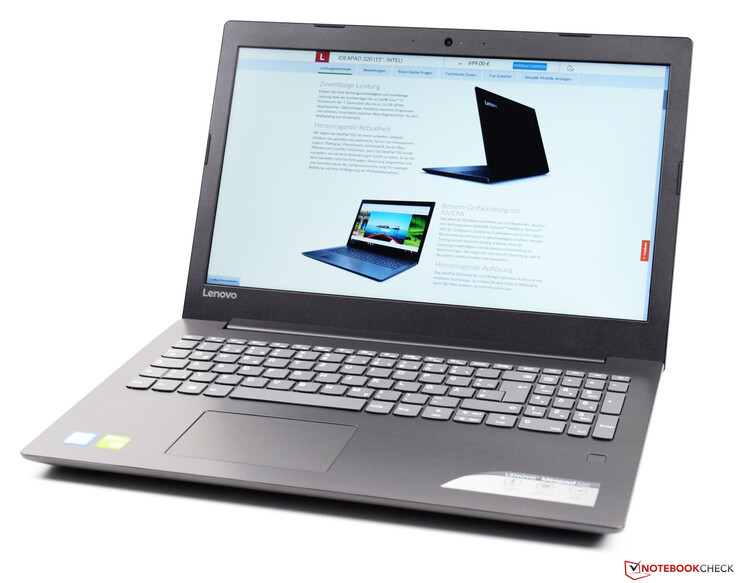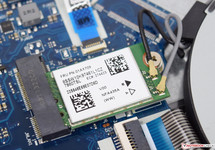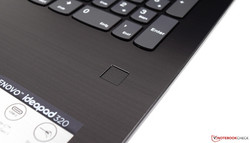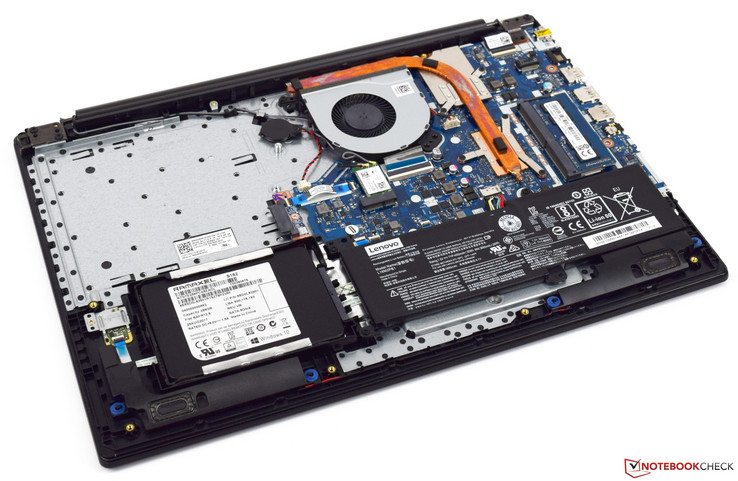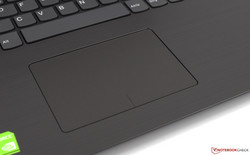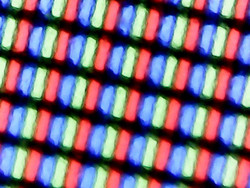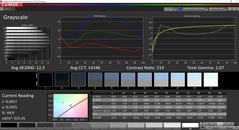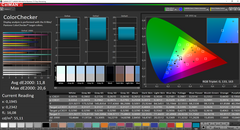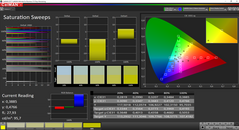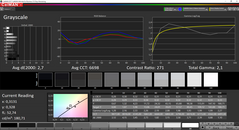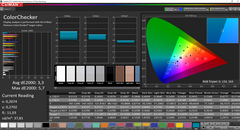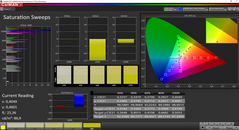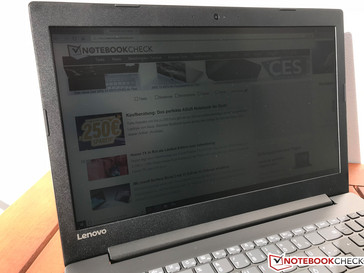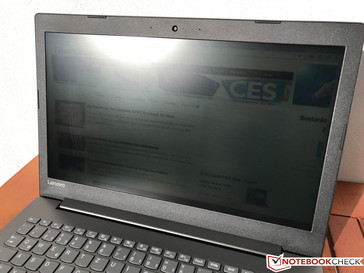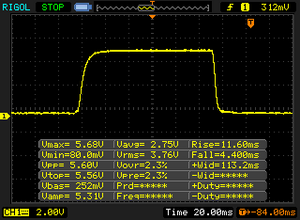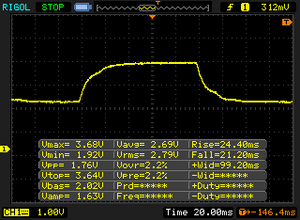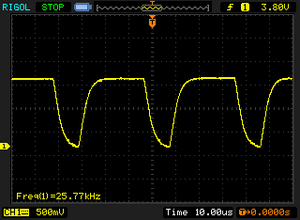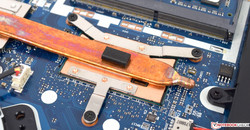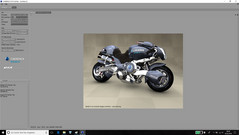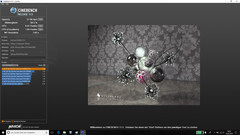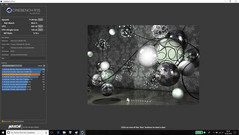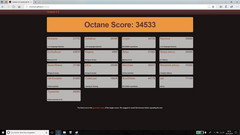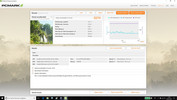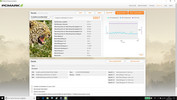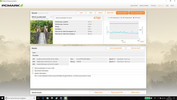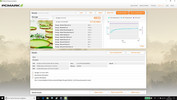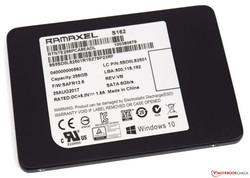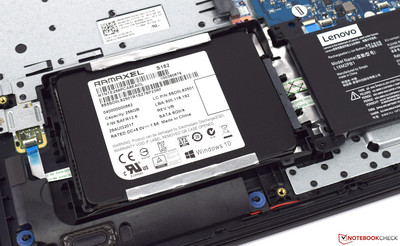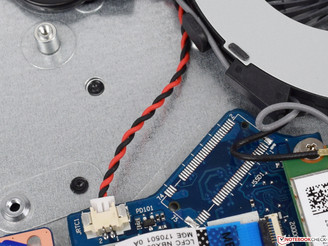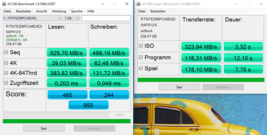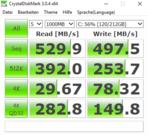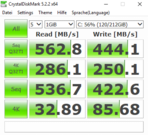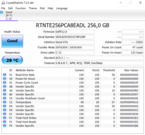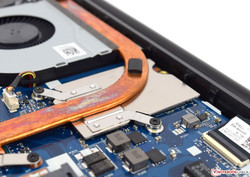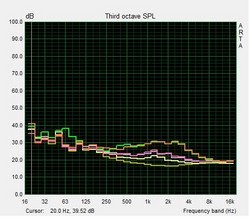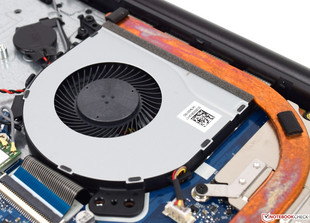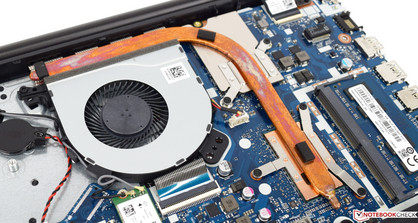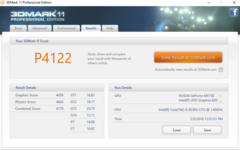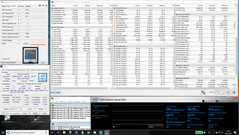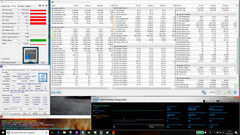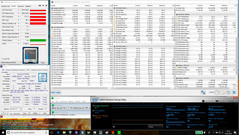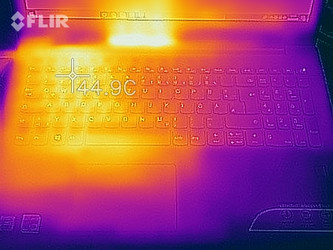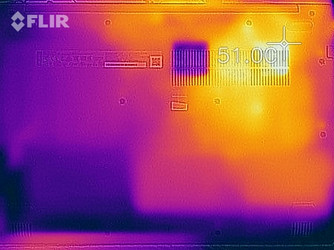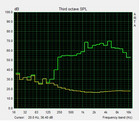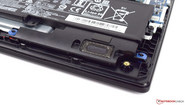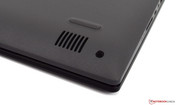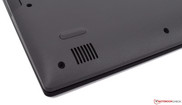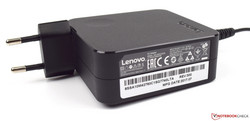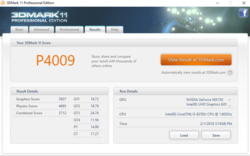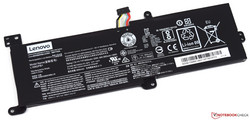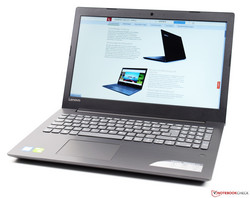Lenovo IdeaPad 320-15IKBRN (8250U, MX150, FHD) Laptop Review

The Lenovo IdeaPad 320-15IKB is a multimedia laptop that can cover a wide range of use thanks to its hardware. The basic configuration offers users a faster and more modern Intel Core i5-8250U with a dedicated Nvidia GeForce MX150, which is equipped with its own VRAM (2 GB of GDDR5). For a price of around 699 Euros (~$870), the device also comes with 8 GB of DDR4 RAM and a 256-GB SSD. Lenovo has decided to keep the previous model's matte TN panel. If you do not mind spending a little more money, you can purchase the Lenovo IdeaPad 320-15IKB with an Intel Core i7-8550U and an Nvidia GeForce MX150 with 4 GB of VRAM. This also gives you the option of a combination of SSD and HDD drives. The price for this configuration is at around 899 Euros (~$1120).
We have chosen only 15-inch multimedia devices as comparison devices for this review. You can find an overview of their most important technical data in the table below.
Please note: This configuration is not currently available in the US.
| Lenovo IdeaPad 320 | Asus ZenBook UX530UX | Asus VivoBook 15 | Acer Swift 3 SF315 | HP Pavilion 15 | Acer Aspire 7 A715 | |
| CPU | Intel Core i5-7200U | Intel Core i7-7500U | Intel Core i5-8250U | AMD Ryzen 5 2500U | Intel Core i5-8250U | Intel Core i5-7300HQ |
| GPU | Nvidia GeForce 940MX | Nvidia GeForce GTX 950M | Nvidia GeForce 940MX | AMD Radeon RX Vega 8 | Nvidia GeForce 940MX | Nvidia GeForce GTX 1050 |
| Panel | 15.6-inch 1920x1080 (TN) | 15.6-inch 1920x1080 (IPS) | 15.6-inch 1920x1080 (IPS) | 15.6-inch 1920x1080 (IPS) | 15.6-inch 1920x1080 (TN) | 15.6-inch 1920x1080 (IPS) |
| RAM | 8 GB | 8 GB | 8 GB | 8 GB | 8 GB | 8 GB |
| Storage | 256 GB SSD | 256 GB SSD | 1 TB HDD | 256 GB SSD | 256 GB SSD | 128 GB SSD + 1 TB HDD |
| Rating | 79% | 83% | 77% | 82% | 81% | 84% |
Case
The case of the Lenovo IdeaPad 320-15IKB is mainly made of plastic. The only decoration on the outside is the Lenovo lettering, which makes the case rather inconspicuous. The smooth surface of the base unit imitates an aluminum finish and fits well into the overall design concept. The device looks good, but is not quite as robust as we would have hoped: The display warps easily under very little pressure. The base unit is more stable, but we were still able to warp it without too much force. The center of the base clearly gives way under pressure as well. Pressing onto the screen causes visible waves on the display. The hinges do a good job, however - they have a very wide opening angle (almost 180 degrees) and the display does not wobble too much either.
The Lenovo IdeaPad 320-15IKB measures 37.8 x 26 cm (~14.9 x 10.2 in). As all our comparison devices are also 15-inch devices, the differences in size are minimal: +/- 2 cm (~0.8 in). Our configuration weighs about 2 kg (~4.4 lb), which is relatively light. This could increase with other configurations (HDD+SSD). The power supply weighs just 210 grams (~7.4 oz).
Connectivity
All the important ports are placed on the left side of the Lenovo IdeaPad 320-15IKB. Lenovo has given our test unit the usual USB 3.1 ports, as well as a USB 3.1 Type-C port. Unfortunately, this does not support Thunderbolt 3 signals, which slightly limits its usefulness. We would also welcome a third USB 3.1 port (Type-A). You can connect external screens to the laptop via an HDMI cable. On the right side, you will find the optical drive and a Kensington Lock connector.
SD Cardreader
The memory card reader is internally connected via USB 2.0, which limits faster memory cards. The memory cards also stand out of the slot quite a bit. The IdeaPad reached a sequential transfer rate of only 29.7 MB/s with our reference card, the Toshiba Exceria Pro SDXC 64 GB UHS-II. But our test unit is even slower when copying JPG files and manages just 26.8 MB/s. The HP Pavilion 15 and Acer Aspire 7 are both significantly faster - their card readers work at USB 3.0 speeds.
| SD Card Reader | |
| average JPG Copy Test (av. of 3 runs) | |
| HP Pavilion 15-cc107ng (Toshiba Exceria Pro SDXC 64 GB UHS-II) | |
| Acer Aspire 7 A715-71G-53TU (Toshiba Exceria Pro SDXC 64 GB UHS-II) | |
| Asus VivoBook 15 X510UQ-BQ534T (Toshiba Exceria Pro SDXC 64 GB UHS-II) | |
| Acer Swift 3 SF315-41-R4W1 | |
| Lenovo IdeaPad 320-15IKBRN 81BG001KGE (Toshiba Exceria Pro SDXC 64 GB UHS-II) | |
| Lenovo IdeaPad 320-15IKB 80XL01NEGE (Toshiba Exceria Pro SDXC 64 GB UHS-II) | |
| Asus ZenBook UX530UX-FY070T (Toshiba Exceria Pro SDXC 64 GB UHS-II) | |
| maximum AS SSD Seq Read Test (1GB) | |
| HP Pavilion 15-cc107ng (Toshiba Exceria Pro SDXC 64 GB UHS-II) | |
| Acer Aspire 7 A715-71G-53TU (Toshiba Exceria Pro SDXC 64 GB UHS-II) | |
| Asus VivoBook 15 X510UQ-BQ534T (Toshiba Exceria Pro SDXC 64 GB UHS-II) | |
| Acer Swift 3 SF315-41-R4W1 | |
| Lenovo IdeaPad 320-15IKBRN 81BG001KGE (Toshiba Exceria Pro SDXC 64 GB UHS-II) | |
| Lenovo IdeaPad 320-15IKB 80XL01NEGE (Toshiba Exceria Pro SDXC 64 GB UHS-II) | |
| Asus ZenBook UX530UX-FY070T (Toshiba Exceria Pro SDXC 64 GB UHS-II) | |
Communication
Wireless communication is taken care of by the Wi-Fi module Qualcomm Atheros QCA9377, which also supports Bluetooth (4.1). According to its specifications, its maximum gross transfer rate is 433 MBit/s. During our measurements, the Lenovo IdeaPad 320-15IKB reached an average rate of 325 MBit/s (sending) and 294 MBit/s (receiving). This means that we did not measure a rise in performance compared to the device's predecessor. If you want to transfer a lot of data, you had better use the Ethernet port. This offers a maximum of 1000 MBit/s and is a lot faster.
Security
The Lenovo IdeaPad 320-15IKB is equipped with a fingerprint sensor, which is integrated into the right side of the wrist rest. After a quick set-up, you can use your fingerprint to log in to Windows. The device also features a Trusted Platform Module (TPM 2.0) and a space reserved for a Kensington Lock.
Accessories
The scope of delivery includes a 65-watt power supply and various service brochures and warranty information.
Maintenance
If you want to do maintenance work on the Lenovo IdeaPad 320-15IKB, you have to take off the entire bottom of the base unit, as the manufacturer has not equipped it with a maintenance hatch. After removing the numerous screws, the cover can be removed relatively easily with a little skill and a suitable lever. Once this is done, you have access to all the important components. The storage device and RAM can be exchanged easily, although we should mention that only one module can be exchanged as the other 4 GB element is firmly soldered on to the motherboard.
Warranty
Lenovo offers a manufacturer's warranty of two years for its IdeaPad 320-15IKB. This can be optionally expanded while purchasing the device (Lenovo online store). An additional 12 months costs a further 27 Euros (~$34). If you would prefer on-site warranty, you will have to pay 51 Euros (~$65) for 36 months.
Please see our Guarantees, Return Policies and Warranties FAQ for country-specific information.
Input Devices
Keyboard
The Lenovo IdeaPad 320-15IKB is equipped with a 6-row chiclet keyboard (no backlighting), which is worked into the top of the base unit. The keys are nicely sized at 16 x 15 mm (~0.63 x 0.6 in) and have a good grip thanks to their slightly roughened surface. We were also happy with the size of the arrow keys (left/right), although the up/down keys have to share the space of one key. The individual keys have short travel and a noticeable pressure point, although we would have preferred this to be more pronounced. As we mentioned in the section about the case, the base unit gives way a little in the center of the keyboard, but this did not bother us while typing. Even fast typing does not produce too much noise - only the space bar rattles a little, which is clearly audible while typing.
Touchpad
The touchpad (ClickPad) has the same color as the rest of the device and is well dimensioned at 10.5 x 7 cm (~4.1 x 2.8 in). This makes the input quite suitable for inputs via gesture control, which can be individually configured via the setup menu of the pad. Thanks to the smooth surface, the cursor navigates quickly. The touchpad is very exact and our inputs were registered precisely, even at the edges and corners of our test unit. The mouse keys are incorporated into the bottom half of the touchpad. They make a loud click sound when pressed, but this did not bother us too much.
Display
The matte Chi Mei display has a native resolution of 1920 x 1080 pixels. Combined with a screen size of 15.6 inches, this translates into a pixel density of 141 ppi. Both the Lenovo's display brightness (194 cd/m²) and its contrast ratio (512:1) are far below our expectations. A device in this price range should offer a panel with significantly higher luminosity. The brightness distribution of 84% is also not really enough. The previous model was also equipped with the same panel and we were just as disappointed with it then. Unfortunately, Lenovo has not dealt with the issue, so the current test unit has to accept just as many minus points as its predecessor. Luckily, we did not notice any clouding on our test unit, and although there is some PWM flickering to regulate display brightness, this happens at a high frequency (25770 Hz) and should not cause any problems in everyday use.
| |||||||||||||||||||||||||
Brightness Distribution: 84 %
Center on Battery: 220 cd/m²
Contrast: 512:1 (Black: 0.43 cd/m²)
ΔE ColorChecker Calman: 11.8 | ∀{0.5-29.43 Ø4.78}
ΔE Greyscale Calman: 12.5 | ∀{0.09-98 Ø5}
62.7% sRGB (Argyll 1.6.3 3D)
40.1% AdobeRGB 1998 (Argyll 1.6.3 3D)
43.44% AdobeRGB 1998 (Argyll 3D)
62.8% sRGB (Argyll 3D)
42.04% Display P3 (Argyll 3D)
Gamma: 2.07
CCT: 14346 K
| Lenovo IdeaPad 320-15IKBRN 81BG001KGE Chi Mei CMN15D5, N156HGA-EAB, 1920x1080, 15.6" | Lenovo IdeaPad 320-15IKB 80XL01NEGE Chi Mei N156HGA-EAB, 1920x1080, 15.6" | Asus ZenBook UX530UX-FY070T Chi Mei CMN15E8, 1920x1080, 15.6" | Asus VivoBook 15 X510UQ-BQ534T LG Philips LP156WF9-SPK2, 1920x1080, 15.6" | Acer Swift 3 SF315-41-R4W1 BOE CQ NV156FHM-N48, 1920x1080, 15.6" | HP Pavilion 15-cc107ng AU Optronics, 1920x1080, 15.6" | Acer Aspire 7 A715-71G-53TU BOE NV156FHM-N42 , 1920x1080, 15.6" | |
|---|---|---|---|---|---|---|---|
| Display | -6% | 49% | -7% | -6% | -11% | -4% | |
| Display P3 Coverage (%) | 42.04 | 39.47 -6% | 64.3 53% | 39.22 -7% | 39.59 -6% | 37.28 -11% | 40.53 -4% |
| sRGB Coverage (%) | 62.8 | 59 -6% | 90.6 44% | 59 -6% | 58.5 -7% | 56.1 -11% | 59.9 -5% |
| AdobeRGB 1998 Coverage (%) | 43.44 | 40.81 -6% | 65.2 50% | 40.55 -7% | 40.9 -6% | 38.51 -11% | 41.87 -4% |
| Response Times | 10% | -32% | 19% | -63% | 10% | -66% | |
| Response Time Grey 50% / Grey 80% * (ms) | 45.6 ? | 42 ? 8% | 40 ? 12% | 43 ? 6% | 46 ? -1% | 45 ? 1% | 49 ? -7% |
| Response Time Black / White * (ms) | 16 ? | 14 ? 12% | 28 ? -75% | 11 ? 31% | 36 ? -125% | 13 ? 19% | 36 ? -125% |
| PWM Frequency (Hz) | 25770 ? | 25000 ? | 25000 ? | 21000 ? | 20000 ? | ||
| Screen | 0% | 56% | 38% | 40% | 3% | 33% | |
| Brightness middle (cd/m²) | 220 | 227 3% | 309 40% | 267 21% | 237 8% | 234 6% | 267 21% |
| Brightness (cd/m²) | 194 | 207 7% | 296 53% | 250 29% | 229 18% | 230 19% | 250 29% |
| Brightness Distribution (%) | 84 | 81 -4% | 80 -5% | 83 -1% | 88 5% | 76 -10% | 82 -2% |
| Black Level * (cd/m²) | 0.43 | 0.44 -2% | 0.24 44% | 0.22 49% | 0.19 56% | 0.34 21% | 0.31 28% |
| Contrast (:1) | 512 | 516 1% | 1288 152% | 1214 137% | 1247 144% | 688 34% | 861 68% |
| Colorchecker dE 2000 * | 11.8 | 11.52 2% | 4.09 65% | 5.31 55% | 4.85 59% | 12.19 -3% | 4.65 61% |
| Colorchecker dE 2000 max. * | 20.6 | 19.97 3% | 7.44 64% | 9.28 55% | 8.34 60% | 20.81 -1% | 8.2 60% |
| Greyscale dE 2000 * | 12.5 | 12.01 4% | 4.75 62% | 6.24 50% | 3.84 69% | 13.99 -12% | 2.65 79% |
| Gamma | 2.07 106% | 2.23 99% | 2.39 92% | 2.7 81% | 2.42 91% | 2.32 95% | 2.44 90% |
| CCT | 14346 45% | 13330 49% | 7034 92% | 7619 85% | 6790 96% | 15863 41% | 6820 95% |
| Color Space (Percent of AdobeRGB 1998) (%) | 40.1 | 38 -5% | 58 45% | 37 -8% | 37 -8% | 36 -10% | 38 -5% |
| Color Space (Percent of sRGB) (%) | 62.7 | 59 -6% | 90 44% | 59 -6% | 58 -7% | 56 -11% | 59 -6% |
| Total Average (Program / Settings) | 1% /
0% | 24% /
43% | 17% /
27% | -10% /
17% | 1% /
1% | -12% /
13% |
* ... smaller is better
The Chi Mei panel cannot improve its ratings in terms of color display: The DeltaE 2000 deviations of 12.5 (gray scales) and 11.8 (ColorChecker) are very far from the ideal value (DeltaE below 3). The TN panel also suffers from a noticeable blue cast. Calibrating the screen improved these results significantly and you can download our ICC profile above, as usual. The Lenovo IdeaPad 320-15IKB reaches slightly better results than its competition in terms of color space coverage: 62.7% of the sRGB color space and 40.1% of the AdobeRGB color space. Nonetheless, these results are not good enough for professional image processing.
Display Response Times
| ↔ Response Time Black to White | ||
|---|---|---|
| 16 ms ... rise ↗ and fall ↘ combined | ↗ 11.6 ms rise | |
| ↘ 4.4 ms fall | ||
| The screen shows good response rates in our tests, but may be too slow for competitive gamers. In comparison, all tested devices range from 0.1 (minimum) to 240 (maximum) ms. » 36 % of all devices are better. This means that the measured response time is better than the average of all tested devices (20.2 ms). | ||
| ↔ Response Time 50% Grey to 80% Grey | ||
| 45.6 ms ... rise ↗ and fall ↘ combined | ↗ 24.4 ms rise | |
| ↘ 21.2 ms fall | ||
| The screen shows slow response rates in our tests and will be unsatisfactory for gamers. In comparison, all tested devices range from 0.165 (minimum) to 636 (maximum) ms. » 77 % of all devices are better. This means that the measured response time is worse than the average of all tested devices (31.6 ms). | ||
Screen Flickering / PWM (Pulse-Width Modulation)
| Screen flickering / PWM detected | 25770 Hz | ≤ 60 % brightness setting | |
The display backlight flickers at 25770 Hz (worst case, e.g., utilizing PWM) Flickering detected at a brightness setting of 60 % and below. There should be no flickering or PWM above this brightness setting. The frequency of 25770 Hz is quite high, so most users sensitive to PWM should not notice any flickering. In comparison: 53 % of all tested devices do not use PWM to dim the display. If PWM was detected, an average of 8108 (minimum: 5 - maximum: 343500) Hz was measured. | |||
It becomes quite clear that our test unit is equipped with a TN panel when looking at the results of our viewing angle test. The inserted display has very instable viewing angles, which is why there is a strong change in the colors when looking at the screen from an angle.
Performance
Our test unit combines a modern Intel Core i5-8250U with a GeForce MX150. With this configuration, the Lenovo IdeaPad 320-15IKB offers a decent base for the many usage scenarios of a multimedia laptop. The soldered-on 4-GB DDR4 RAM has already been expanded to a total of 8 GB by adding another module. The storage device in the shape of an SSD ensures a smoothly running system.
Processor
The Intel Core i5-8250U is a very energy-efficient quad-core processor with a base clock rate of 1.6 GHz. In turbo mode, this SoC can reach up to 3.4 GHz for a short time, which creates a significant increase in performance. Our test unit holds a good position in the middle ranks of our comparison field and lies right next to the HP Pavilion 15. The Intel Core i5-8250U cannot keep up with its competition in the Cinebench R15 Multi benchmark. The compact cooling system soon reaches its limits and CPU speed is throttled shortly after the beginning of the test. The Asus VivoBook 15 did a significantly better job here. Unfortunately, we cannot guarantee that the Intel Core i7-8550U in the top configuration will offer a better performance. In direct comparison to its predecessor, equipped with the Intel Core i5-7200U, the CPU performance has improved dramatically.
The Cinebench R15 Multi loop is supposed to measure the processor's performance during a long period of load. The graph shows that the performance of our processor drops under constant load. The result went from 540 points to a final 450 points, which signifies a drop in performance of about 17%. This result is not worrisome as we have often measured similar drops in performance in these SoCs.
| Cinebench R11.5 | |
| CPU Single 64Bit | |
| Acer Aspire 7 A715-71G-53TU | |
| Lenovo IdeaPad 320-15IKBRN 81BG001KGE | |
| Acer Swift 3 SF315-41-R4W1 | |
| CPU Multi 64Bit | |
| Lenovo IdeaPad 320-15IKBRN 81BG001KGE | |
| Acer Aspire 7 A715-71G-53TU | |
| Acer Swift 3 SF315-41-R4W1 | |
| Octane V2 - Total Score | |
| Acer Aspire 7 A715-71G-53TU | |
| Lenovo IdeaPad 320-15IKBRN 81BG001KGE | |
| Acer Swift 3 SF315-41-R4W1 | |
| Mozilla Kraken 1.1 - Total | |
| Lenovo IdeaPad 320-15IKBRN 81BG001KGE | |
| Acer Aspire 7 A715-71G-53TU | |
* ... smaller is better
System Performance
Overall, the Lenovo IdeaPad 320-15IKB offers more than enough performance for office, internet and multimedia applications. Thanks to the dedicated graphics card, the device can even display games. The PCMark results are rather mixed and show a similar result to the CPU benchmarks before. But still, the mobile processor offers a solid performance and can master all usual areas of use. With the Intel Core i5-8250U, the device should not run into difficulties in the next two to three years.
| PCMark 8 Home Score Accelerated v2 | 3274 points | |
| PCMark 8 Creative Score Accelerated v2 | 3357 points | |
| PCMark 8 Work Score Accelerated v2 | 4760 points | |
| PCMark 10 Score | 3007 points | |
Help | ||
Storage Devices
We appreciate the fact that Lenovo has used an SSD for this device. The storage device from Ramaxel offers 256 GB of storage and communicates via a SATA interface. The documented performance of the 2.5-inch SSD is fine, and the SSD clearly plays a big part in the smooth system performance. We did not notice any long waiting periods during the entire time of testing. We were disappointed by the missing second slot, however, which could have been used to add a second storage device. While we did find a place marker for an M.2 SSD, it was just that - a place marker. We would recommend looking closely at the included storage devices at purchase, as Lenovo also offers the IdeaPad 320-15IKB with an SSD and HDD.
| Lenovo IdeaPad 320-15IKBRN 81BG001KGE Ramaxel RTNTE256PCA8EADL | Lenovo IdeaPad 320-15IKB 80XL01NEGE SK Hynix HFS256G3BTND | Asus ZenBook UX530UX-FY070T SK Hynix HFS256G39TND-N210A | Asus VivoBook 15 X510UQ-BQ534T | Acer Swift 3 SF315-41-R4W1 Intel SSD 600p SSDPEKKW256G7 | HP Pavilion 15-cc107ng SanDisk SD8SN8U256G1006 | Acer Aspire 7 A715-71G-53TU Kingston RBUSNS8180DS3128GH | |
|---|---|---|---|---|---|---|---|
| CrystalDiskMark 3.0 | 3% | -41% | -86% | 43% | -5% | -15% | |
| Read Seq (MB/s) | 530 | 466.4 -12% | 282.2 -47% | 139.2 -74% | 1130 113% | 475.4 -10% | 456 -14% |
| Write Seq (MB/s) | 497.5 | 259.3 -48% | 184.5 -63% | 126 -75% | 601 21% | 453.5 -9% | 245 -51% |
| Read 512 (MB/s) | 392 | 314.5 -20% | 233.5 -40% | 42.35 -89% | 837 114% | 345.2 -12% | 328.4 -16% |
| Write 512 (MB/s) | 253.7 | 259.4 2% | 140.1 -45% | 111.2 -56% | 606 139% | 299.1 18% | 146.3 -42% |
| Read 4k (MB/s) | 29.67 | 31.47 6% | 24.42 -18% | 0.207 -99% | 20.46 -31% | 27.8 -6% | 31.72 7% |
| Write 4k (MB/s) | 78.3 | 78.3 0% | 48.98 -37% | 4.059 -95% | 81.7 4% | 54.2 -31% | 69.3 -11% |
| Read 4k QD32 (MB/s) | 282.8 | 346.1 22% | 170 -40% | 0.738 -100% | 235.5 -17% | 250.9 -11% | 263.7 -7% |
| Write 4k QD32 (MB/s) | 149.8 | 260.4 74% | 98.5 -34% | 4.468 -97% | 155 3% | 181.8 21% | 165.7 11% |
Graphics
The Intel UHD Graphics 620 mainly takes care of image display, which takes a big load off the processor. But the Lenovo IdeaPad 320-15IKB also offers a dedicated graphics card (Nvidia GeForce MX150) with its own VRAM (2 GB of GDDR5). This replaces the predecessor (GeForce 940MX) and offers significantly improved 3D performance. The 3DMark benchmarks confirm this improvement and show that the GeForce MX150 offers a similar performance to the GeForce GTX 950M. The Acer Aspire 7 has a significant advantage here due to the better GPU.
| 3DMark 11 Performance | 4576 points | |
| 3DMark Ice Storm Standard Score | 43559 points | |
| 3DMark Cloud Gate Standard Score | 9669 points | |
| 3DMark Fire Strike Score | 3068 points | |
| 3DMark Fire Strike Extreme Score | 1594 points | |
| 3DMark Time Spy Score | 1101 points | |
Help | ||
Gaming Performance
The performance of the GeForce MX150 is sufficient to display most games smoothly in HD resolution (1366x768 pixels) and average quality settings. The graphics card has more difficulty displaying games in the device's native resolution, which is why we will refer you to our benchmark table at this point. Performance remains stable even during long gaming sessions.
| low | med. | high | ultra | |
|---|---|---|---|---|
| BioShock Infinite (2013) | 149.7 | 97 | 81.8 | 32.5 |
| The Witcher 3 (2015) | 62.1 | 36.2 | 16.8 | 11.8 |
| Rise of the Tomb Raider (2016) | 67 | 38.3 | 21.8 | 17.5 |
Emissions
System Noise
The Lenovo IdeaPad 320-15IKB remains relatively quiet (34.6 dB(A)) under average load. While idling and under low load, the cooling fan usually stands still. While gaming, the fan turns up high and we measured peaks of 40.2 dB(A). The Asus VivoBook 15 and the Acer Aspire 7 are even louder, while the other comparison devices have average results. We did not notice any other noises.
Noise level
| Idle |
| 29.9 / 29.9 / 32.2 dB(A) |
| Load |
| 34.6 / 40.2 dB(A) |
 | ||
30 dB silent 40 dB(A) audible 50 dB(A) loud |
||
min: | ||
| Lenovo IdeaPad 320-15IKBRN 81BG001KGE GeForce MX150, i5-8250U, Ramaxel RTNTE256PCA8EADL | Lenovo IdeaPad 320-15IKB 80XL01NEGE GeForce 940MX, i5-7200U, SK Hynix HFS256G3BTND | Asus ZenBook UX530UX-FY070T GeForce GTX 950M, i7-7500U, SK Hynix HFS256G39TND-N210A | Asus VivoBook 15 X510UQ-BQ534T GeForce 940MX, i5-8250U | Acer Swift 3 SF315-41-R4W1 Vega 8, R5 2500U, Intel SSD 600p SSDPEKKW256G7 | HP Pavilion 15-cc107ng GeForce 940MX, i5-8250U, SanDisk SD8SN8U256G1006 | Acer Aspire 7 A715-71G-53TU GeForce GTX 1050 Mobile, i5-7300HQ, Kingston RBUSNS8180DS3128GH | |
|---|---|---|---|---|---|---|---|
| Noise | 2% | 1% | -9% | -0% | -1% | -1% | |
| off / environment * (dB) | 29.9 | 30.5 -2% | 30.2 -1% | 31 -4% | 31.8 -6% | 30.5 -2% | 30.4 -2% |
| Idle Minimum * (dB) | 29.9 | 30.5 -2% | 30.2 -1% | 32.3 -8% | 31.8 -6% | 30.9 -3% | 30.4 -2% |
| Idle Average * (dB) | 29.9 | 30.5 -2% | 30.2 -1% | 32.3 -8% | 32.1 -7% | 30.9 -3% | 30.8 -3% |
| Idle Maximum * (dB) | 32.2 | 30.5 5% | 31.6 2% | 32.3 -0% | 32.1 -0% | 31 4% | 30.8 4% |
| Load Average * (dB) | 34.6 | 35.1 -1% | 36 -4% | 43.2 -25% | 33 5% | 37.2 -8% | 33.6 3% |
| Witcher 3 ultra * (dB) | 40.2 | ||||||
| Load Maximum * (dB) | 40.2 | 35.4 12% | 36.6 9% | 43.2 -7% | 34.8 13% | 36.8 8% | 43.4 -8% |
* ... smaller is better
Temperature
The measured case temperatures are similar under load and during the Witcher 3 test, although we measured a peak of 51.1 °C (~ 124°F) during the gaming test. Under full load, the case heated up to a maximum of 49.7 °C (~ 121.5 °F). The Lenovo IdeaPad 320-15IKB performs best of all comparison devices as its temperatures are nice and low while idling with an average of 23 °C (~ 73.4 °F). Things look quite different on the inside, however. We measured peaks of 85 °C (~ 185 °F) around the CPU during our stress test, and the GPU reached a maximum of 78 °C (~ 173.4 °F). Despite the relatively high temperatures, the Intel Core i5-8250U managed to keep its base clock rate of 1.6 GHz stable. The GeForce MX150 reacted a little differently and clocked at 1075 MHz under constant load, which is a little below its base rate (1469 - 1532 MHz). Therefore, the results of the second run of the 3DMark 11 were a little worse at 4122 points. As the stress test simulates an extreme scenario, you should not encounter any noticeable restrictions during normal use.
(±) The maximum temperature on the upper side is 43 °C / 109 F, compared to the average of 36.9 °C / 98 F, ranging from 21.1 to 71 °C for the class Multimedia.
(-) The bottom heats up to a maximum of 49.7 °C / 121 F, compared to the average of 39.2 °C / 103 F
(+) In idle usage, the average temperature for the upper side is 23 °C / 73 F, compared to the device average of 31.3 °C / 88 F.
(±) Playing The Witcher 3, the average temperature for the upper side is 33 °C / 91 F, compared to the device average of 31.3 °C / 88 F.
(+) The palmrests and touchpad are reaching skin temperature as a maximum (34.5 °C / 94.1 F) and are therefore not hot.
(-) The average temperature of the palmrest area of similar devices was 28.7 °C / 83.7 F (-5.8 °C / -10.4 F).
| Lenovo IdeaPad 320-15IKBRN 81BG001KGE GeForce MX150, i5-8250U, Ramaxel RTNTE256PCA8EADL | Lenovo IdeaPad 320-15IKB 80XL01NEGE GeForce 940MX, i5-7200U, SK Hynix HFS256G3BTND | Asus ZenBook UX530UX-FY070T GeForce GTX 950M, i7-7500U, SK Hynix HFS256G39TND-N210A | Asus VivoBook 15 X510UQ-BQ534T GeForce 940MX, i5-8250U | Acer Swift 3 SF315-41-R4W1 Vega 8, R5 2500U, Intel SSD 600p SSDPEKKW256G7 | HP Pavilion 15-cc107ng GeForce 940MX, i5-8250U, SanDisk SD8SN8U256G1006 | Acer Aspire 7 A715-71G-53TU GeForce GTX 1050 Mobile, i5-7300HQ, Kingston RBUSNS8180DS3128GH | |
|---|---|---|---|---|---|---|---|
| Heat | -5% | -3% | -9% | -8% | 4% | -8% | |
| Maximum Upper Side * (°C) | 43 | 43.8 -2% | 48.2 -12% | 40 7% | 41 5% | 42.3 2% | 41.6 3% |
| Maximum Bottom * (°C) | 49.7 | 43.7 12% | 45.8 8% | 44 11% | 41.1 17% | 40 20% | 42.5 14% |
| Idle Upper Side * (°C) | 24 | 26.5 -10% | 25 -4% | 31 -29% | 29.9 -25% | 25.5 -6% | 29.7 -24% |
| Idle Bottom * (°C) | 23.7 | 28.4 -20% | 24.9 -5% | 29.4 -24% | 30.9 -30% | 23.6 -0% | 29.4 -24% |
* ... smaller is better
Speakers
Lenovo has placed the two stereo speakers towards the front of the bottom of the base unit. With a maximum of 77.1 dB(A), they produce a decent volume. However, the sound lacks bass, and mids and highs predominate. The Dolby Audio software lets you choose between various predefined sound profiles. We would recommend using headphones or external speakers for a better sound experience.
Lenovo IdeaPad 320-15IKBRN 81BG001KGE audio analysis
(±) | speaker loudness is average but good (77.1 dB)
Bass 100 - 315 Hz
(-) | nearly no bass - on average 18.8% lower than median
(-) | bass is not linear (15.2% delta to prev. frequency)
Mids 400 - 2000 Hz
(+) | balanced mids - only 4.3% away from median
(±) | linearity of mids is average (7.2% delta to prev. frequency)
Highs 2 - 16 kHz
(±) | higher highs - on average 7.1% higher than median
(+) | highs are linear (6% delta to prev. frequency)
Overall 100 - 16.000 Hz
(±) | linearity of overall sound is average (24% difference to median)
Compared to same class
» 84% of all tested devices in this class were better, 6% similar, 10% worse
» The best had a delta of 5%, average was 17%, worst was 45%
Compared to all devices tested
» 71% of all tested devices were better, 6% similar, 22% worse
» The best had a delta of 4%, average was 24%, worst was 134%
Asus ZenBook UX530UX-FY070T audio analysis
(-) | not very loud speakers (67.1 dB)
Bass 100 - 315 Hz
(-) | nearly no bass - on average 15.8% lower than median
(±) | linearity of bass is average (7.6% delta to prev. frequency)
Mids 400 - 2000 Hz
(+) | balanced mids - only 3.9% away from median
(+) | mids are linear (5.4% delta to prev. frequency)
Highs 2 - 16 kHz
(±) | higher highs - on average 5.9% higher than median
(±) | linearity of highs is average (9.7% delta to prev. frequency)
Overall 100 - 16.000 Hz
(±) | linearity of overall sound is average (23.8% difference to median)
Compared to same class
» 83% of all tested devices in this class were better, 6% similar, 11% worse
» The best had a delta of 5%, average was 17%, worst was 45%
Compared to all devices tested
» 71% of all tested devices were better, 6% similar, 23% worse
» The best had a delta of 4%, average was 24%, worst was 134%
Frequency diagram in comparison (check boxes can be turned on/off!)
Energy Management
Power Consumption
The new version of the Lenovo IdeaPad 320-15IKB turns out not to be quite as energy-efficient as its predecessor. It treats itself to 4 - 8.3 watts while idling, which is a relatively good result in this comparison field. Under average load, the IdeaPad based on the Kaby Lake refresh CPU is rather sparing at 37.3 watts. We did also measure peaks of 75 watts, although this soon stabilized at around 65 watts. We measured an average of 47.5 watts by the end of the stress test. While gaming, the notebook consumed 52 watts. The compact power supply offers a maximum of 65 watts. We believe that Lenovo could have included a stronger power supply, but due to the limitation, the battery still did not lose power when it was under full load.
| Off / Standby | |
| Idle | |
| Load |
|
Key:
min: | |
| Lenovo IdeaPad 320-15IKBRN 81BG001KGE i5-8250U, GeForce MX150, Ramaxel RTNTE256PCA8EADL, TN LED, 1920x1080, 15.6" | Lenovo IdeaPad 320-15IKB 80XL01NEGE i5-7200U, GeForce 940MX, SK Hynix HFS256G3BTND, TN LED, 1920x1080, 15.6" | Asus ZenBook UX530UX-FY070T i7-7500U, GeForce GTX 950M, SK Hynix HFS256G39TND-N210A, IPS, 1920x1080, 15.6" | Asus VivoBook 15 X510UQ-BQ534T i5-8250U, GeForce 940MX, , , 1920x1080, 15.6" | Acer Swift 3 SF315-41-R4W1 R5 2500U, Vega 8, Intel SSD 600p SSDPEKKW256G7, IPS, 1920x1080, 15.6" | HP Pavilion 15-cc107ng i5-8250U, GeForce 940MX, SanDisk SD8SN8U256G1006, TN LED, 1920x1080, 15.6" | Acer Aspire 7 A715-71G-53TU i5-7300HQ, GeForce GTX 1050 Mobile, Kingston RBUSNS8180DS3128GH, a-Si TFT-LCD, IPS, 1920x1080, 15.6" | |
|---|---|---|---|---|---|---|---|
| Power Consumption | 17% | -7% | -29% | -30% | 5% | -39% | |
| Idle Minimum * (Watt) | 4.03 | 2.9 28% | 3.5 13% | 5.6 -39% | 7.3 -81% | 2.8 31% | 4 1% |
| Idle Average * (Watt) | 6.81 | 5.9 13% | 5.3 22% | 9.2 -35% | 9.7 -42% | 5.8 15% | 6.9 -1% |
| Idle Maximum * (Watt) | 8.34 | 7.3 12% | 9.1 -9% | 9.7 -16% | 13 -56% | 7.5 10% | 9.4 -13% |
| Load Average * (Watt) | 37.3 | 39.5 -6% | 60 -61% | 58 -55% | 40.4 -8% | 54 -45% | 72.6 -95% |
| Witcher 3 ultra * (Watt) | 52 | ||||||
| Load Maximum * (Watt) | 65.5 | 42 36% | 65 1% | 64.2 2% | 42.2 36% | 56 15% | 122 -86% |
* ... smaller is better
Battery Runtimes
The new IdeaPad 320 still only has a small 30-Wh battery. Other comparison devices can do significantly better. Only the Asus VivoBook 15 has an even shorter battery runtime in our practical Wi-Fi test. We had to criticize the same thing about the previous model. A 15.6-inch device should manage 5 to 6 hours of battery runtime. We also checked the 3D performance on battery. The result is a little lower than before (4009 points in the 3DMark 11).
| Lenovo IdeaPad 320-15IKBRN 81BG001KGE i5-8250U, GeForce MX150, 30 Wh | Lenovo IdeaPad 320-15IKB 80XL01NEGE i5-7200U, GeForce 940MX, 30 Wh | Asus ZenBook UX530UX-FY070T i7-7500U, GeForce GTX 950M, 50 Wh | Asus VivoBook 15 X510UQ-BQ534T i5-8250U, GeForce 940MX, 42 Wh | Acer Swift 3 SF315-41-R4W1 R5 2500U, Vega 8, 48 Wh | HP Pavilion 15-cc107ng i5-8250U, GeForce 940MX, 41.7 Wh | Acer Aspire 7 A715-71G-53TU i5-7300HQ, GeForce GTX 1050 Mobile, 48 Wh | |
|---|---|---|---|---|---|---|---|
| Battery runtime | 4% | 16% | -13% | 3% | 47% | 2% | |
| Reader / Idle (h) | 10.5 | 8.8 -16% | 12.2 16% | 9.9 -6% | |||
| H.264 (h) | 5 | 7 40% | 5.1 2% | ||||
| WiFi v1.3 (h) | 4.5 | 4.7 4% | 6.2 38% | 3.9 -13% | 5.2 16% | 6.6 47% | 5.6 24% |
| Load (h) | 1.8 | 1.8 0% | 1.4 -22% | 1.6 -11% |
Verdict
Pros
Cons
The Lenovo IdeaPad 320-15IKB is a 15.6-inch multimedia laptop. Unfortunately, Lenovo has not acted upon our criticism of the previous version, which leaves us with a device with the same issues as before, but has improved the performance. Of course, the current Intel Core i5-8250U offers quite a decent performance and the Lenovo IdeaPad 320-15IKB can even be used for gaming thanks to the GeForce MX150. All in all, buyers will receive a good all-round notebook with a substandard display for a decent price of 739 Euros (~$922).
The SSD is a good addition that does not slow the system down unnecessarily. However, if you are not careful you will not be able to add a further drive. If you purchase the configuration with a combination of SSD and HDD, you will be rewarded with a further M.2 slot. This was omitted in our device. The processor performs well and offers a noticeable improvement from the previous version. The same can be said for the GeForce MX150, which can be compared to the GeForce GTX 950M. The manufacturer could possibly reconsider its choice of ports - we would have hoped for a further USB port as well as a USB Type-C port that supports Thunderbolt 3 signals. This would significantly improve the overall impression of this device and expand its area of use.
At first glance, the Lenovo IdeaPad 320-15IKB looks like a good all-round device. However, the display requires a big compromise.
Lenovo IdeaPad 320-15IKBRN 81BG001KGE
- 02/08/2018 v6 (old)
Sebastian Bade





